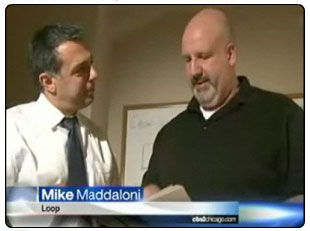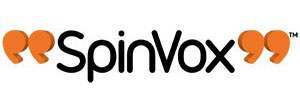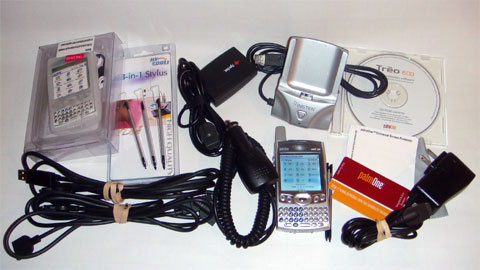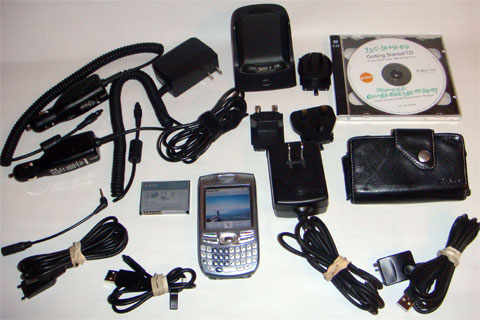Mike Maddaloni featured in CBS2 Chicago Story on T-Mobile Paper Bill Charges
 As much as a mobile phone is a high tech device, it doesn’t necessarily mean everybody who uses one is also high tech. In most cases, that is not the case. When I heard T-Mobile, who is my mobile provider, is going to start charging for paper copies of bills to be sent, I was honestly surprised. I heard about it in a tweet from CBS2 Chicago, and responded with my stance.
As much as a mobile phone is a high tech device, it doesn’t necessarily mean everybody who uses one is also high tech. In most cases, that is not the case. When I heard T-Mobile, who is my mobile provider, is going to start charging for paper copies of bills to be sent, I was honestly surprised. I heard about it in a tweet from CBS2 Chicago, and responded with my stance.
Shortly after I was asked if I would like to be interviewed about the story, to which your humble and definitely not camera-shy writer quickly obliged. The accompanying photo is a screen shot from the interview today on CBS2 with reporter Vince Gerasole, and by clicking on the picture or this link to the CBS2 Web site you can watch the story.
Maybe I am hyper sensitive to such issues in my capacity as a Web architect and developer, but the ultimate goal of any use of retail technology is to help those using it. As much as online billing is alive and flourishing, not to mention my use and support of it, I also understand that we are “not there yet” as a society when it comes to being completely paperless. Some people prefer a paper bill, especially for those who are not online continuously as others are. T-Mobile is charging $1.50 for a non-detailed bill (not listing all calls) and $3.50 for a bill listing them all. I can see if they wanted to impose a charge on a detailed bill, as they tend to run long (in the news story, the bill I printed was 18 pages), but charging even for a basic bill makes no sense to me.
Rather that starting with the charge, T-Mobile should incentivize people by offering them a credit, say US$5, to go paperless. That may cover most people. For those remaining, this should have already been worked into your pricing structure to send bills in some form. Rather than sending bulky envelopes with all kinds of inserts, perhaps send the statement in a self-sealing sheet, similar to how some checks are sent? There are other options – explore them!
I must admit I am a very satisfied T-Mobile customer, and I have stated that before here on The Hot Iron. However, one issue I do have is with billing. Where I get my bill online, I never get an email or even SMS alert that my bill is available. I have to rely on my credit card statement to see a new bill has been cut. Also, the T-Mobile site offers an HTML version of the bill and not a PDF version, so someone would need the software to make PDFs in order to save it digitally. Most other vendors send email alerts and offer PDFs.
I’m interested in how this issue plays out, and if other providers capitalize on it, or if all others start charging for bills. In any case, we all need to be aware about what is showing up on our bills. For this issue, I thank CBS2 Chicago for letting me know about it.
Did you enjoy reading this? You are welcome to subscribe to The Hot Iron by RSS feed or by email.
Selling My Palm Treo 600 Locked Device on eBay
After some decent success selling off my Palm Treo 680 unlocked device, I am now selling its predecessor, a Treo 600 up for sale on eBay, along with a slew of accessories, as you can see below.
Along with the device itself, which is in good order but has some wear, there are a large number of cables and chargers, plus a cradle. If you’re a Verizon Wireless customer and are looking for a device, this could be yours.
The auction closes next Sunday and the bidding begins at a penny!
Did you enjoy reading this? You are welcome to subscribe to The Hot Iron by RSS feed or by email.
Selling My Palm Treo 680 Unlocked Device on eBay
All good things come to an end, and so does the use of my Palm Treo 680 unlocked device. Since making the switch to Nokia about a year ago, I have decided to put the Treo 680 up for sale on eBay, along with a slew of accessories, as you can see below.
Along with the device itself, which is in good order but has some wear, there are a large number of cables and chargers, plus a spare battery. If you’re looking for an unlocked device, this could be yours.
The auction closes next Monday and the bidding begins at a penny!
Did you enjoy reading this? You are welcome to subscribe to The Hot Iron by RSS feed or by email.
SpinVox Is My Voicemail Hero
 There comes a time when you introduce something remarkable in to your business or life that you almost don’t realize it is even there. For me, that is SpinVox, a service which transcribes voicemail to text.
There comes a time when you introduce something remarkable in to your business or life that you almost don’t realize it is even there. For me, that is SpinVox, a service which transcribes voicemail to text.
I started using SpinVox in January, and here it August. I was setup with an account by James Whatley, SpinVox’s Head of Digital & Social Media Strategy, whom I met at the Nokia OpenLab last year in Helsinki. The service is tied to my mobile voicemail, and as it worked so well I added it to my Vonage account, which they refer to it as Visual Voicemail. Since then it has been such a vital tool for me, I almost forgot life without it.
How It Works
SpinVox replaces your mobile carrier’s own voicemail system, in my case T-Mobile. This is achieved by forwarding all calls that do not answer to numbers tied to the SpinVox system. When someone leaves me a voicemail, I get both an email and a SMS (or text message as we call it in the US). Each has the transcribed text of the voicemail plus numbers to call to listen and reply to the message. For my Vonage line, it was simply adding the service, and the regular emails and SMSs I received now have the text of the message.
So how well does it transcribe it? Not bad! Common words come through without missing a beat. Names and not-so common words come through pretty well, and if it cannot translate it exactly, it does it phonetically and even puts a question mark next to it. For example, my last name, Maddaloni, is usually spelled out phonetically. All in all I rarely have to listen to a message to understand it, but if I want to I can. The delivery of messages is not instantaneously as compared to traditional voicemail, but it usually arrives within a few minutes.
Why It Works
You may be asking, as I did originally, so what? There are 2 benefits to SpinVox that made me a true believer. The first is the ability to read a voicemail message when you don’t have the ability to listen to it. In the middle of a meeting, calls get translated to text and you can get the gist of it without putting the device to your ear. Many times a return email or SMS to the caller will do the trick. A second and equal benefit is the ability to file and store transcriptions of voicemails. This is huge, as many times project details are communicated by voicemail, and now you have a written record that can be stored in email archives or in other digital files.
Another feature of SpinVox is Memo. This is where you can speak a message to yourself and it is delivered in an email message to you. I find myself using this when I am out for a walk and ideas come to me, and I don’t have – or want – paper and a pen.
Reading voicemail is a great convenience in today’s multitasking world, and SpinVox makes it easy. It is available through several carriers, such as Vonage, Skype and Verizon in the US and Rogers in Canada. If you are not on these carriers you can get it as an add-on through uReach. On the uReach or SpinVox sites you can try it for yourself to see how well it translates your voice, which for me at least was an experience the first time I saw it.
Did you enjoy reading this? You are welcome to subscribe to The Hot Iron by RSS feed or by email.
Great Video Explaining Unlocked Mobile Phones
Regular readers of The Hot Iron know I have written a post or 2 (more like several) on unlocked mobile devices, or mobile phones as some know them as. Where I have tried to explain it, the following video does a great job explaining the benefits of an unlocked device. Watch the video below or view the video directly.
This video showcases the specific US network providers as not all of them offer a SIM card. This differs greatly from pretty much the rest of the world! Devices like the iPhone and many other models stamped with a carrier’s logo are locked to those networks, and there isn’t even the option to use a SIM card. This video is from Nokia, who sells mostly unlocked devices, though recently they have offered models locked to Verizon Wireless.
Of course, unlocked devices cost more. But their value is also greater as you have a better chance of reselling it as the market for it is greater. Some device manufacturers, like Apple, only want you to use them on a specific network, as they have made business deals with the network provider for exclusivity. Where that may work for them, it doesn’t work for the masses who want a particular device. The providers like locked devices as they probably see it a big part of their competitive advantage, which is a lot harder than providing excellent customer service!
This video is a great start to educating people, but it will time. In the meantime, I shy away from the iPhone. But note to Steve Jobs – I would be willing to pay a lot more than the highest price you currently charge for the iPhone to get one unlocked!
Did you enjoy reading this? You are welcome to subscribe to The Hot Iron by RSS feed or by email.



